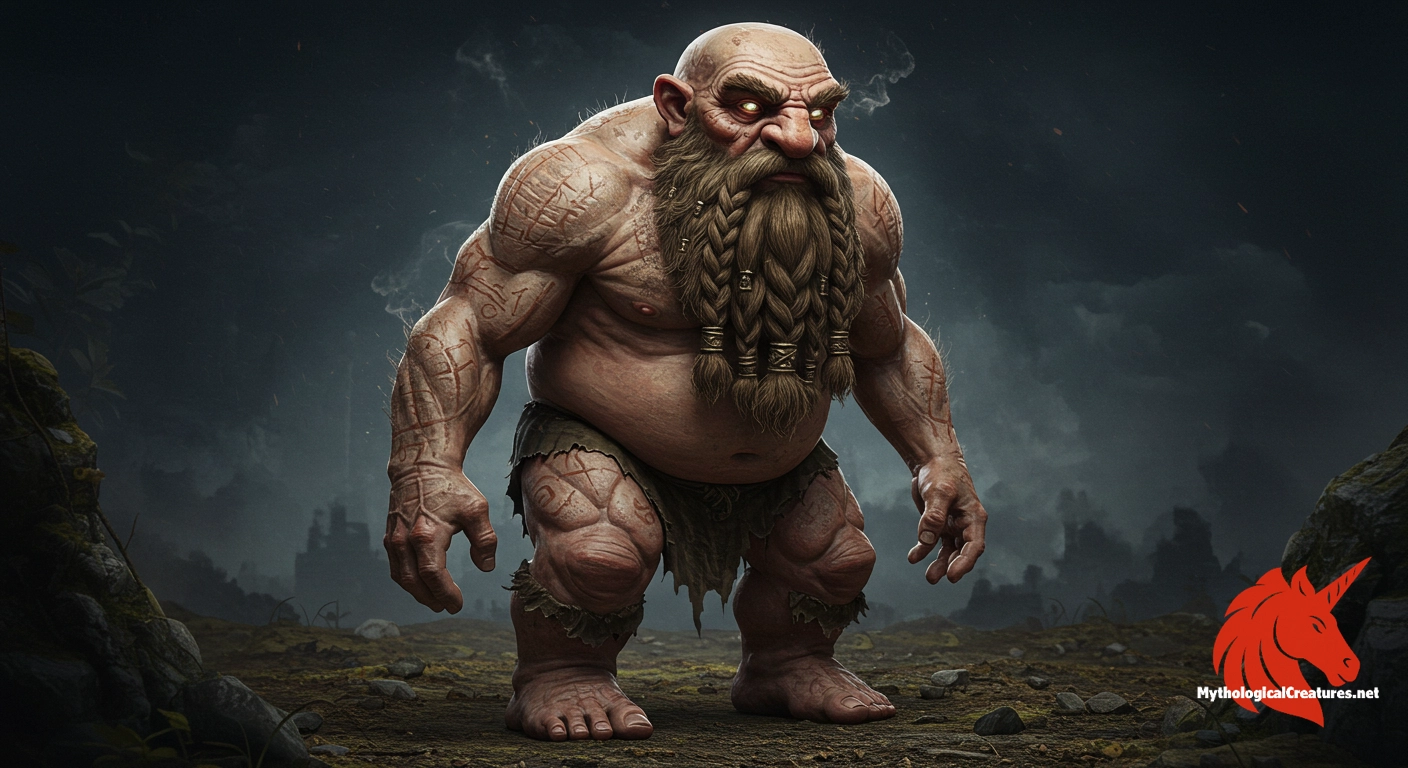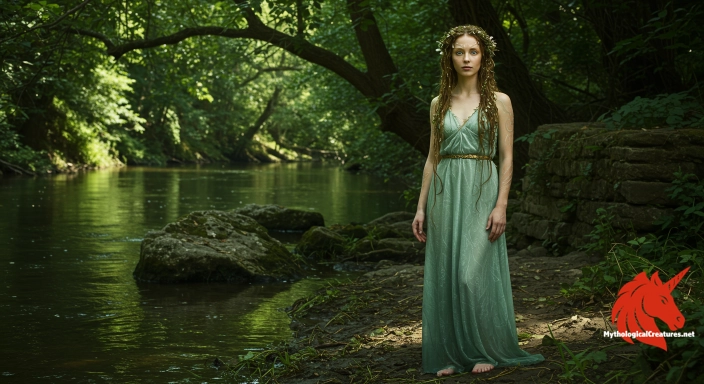Alberich: Alberich is a legendary dwarf from German heroic legend known for his cunning and association with supernatural beings.

Alberich
Alberich - Alberich is a pivotal figure whose actions and curse on the ring have had a lasting impact on German mythological and operatic traditions.
Origins & First Encounters
Alberich emerges as one of the most enigmatic figures in German heroic legend, celebrated for his cunning and mastery over supernatural forces. His origins are deeply embedded in medieval epics, where the dwarf archetype symbolises both mischievous wisdom and formidable power. The legend of Alberich first takes shape in influential works such as the Nibelungenlied and Ortnit, which solidify his role as a character of moral ambiguity and unyielding ambition.
His name, meaning 'ruler of supernatural beings (elves)', not only highlights his dominion over the mystical realms but also forges a vital link with the broader tapestry of myth. The enduring fascination with his narrative reflects a cultural preoccupation with figures who inhabit that nebulous space between mortal limitations and otherworldly might. Over time, his character has been adapted and refined, mirroring the evolving social and political landscapes of medieval and later Europe. This transformative quality allows Alberich to serve as a prism through which themes of power, fate, and retribution are examined.
He invites intrigue through a portrayal that balances cunning ambition with a tragic awareness of the consequences of unchecked desire. The layered depiction of his persona is a testament to the intricate interplay between fate and free will. His myth continues to captivate audiences, resonating with enduring lessons about the supernatural and the human condition. In essence, Alberich stands as a timeless symbol of both the allure and the peril inherent in the pursuit of power.
Source Texts & Tale Variants
Alberich's earliest literary presence is found in medieval epics, most notably within the pages of the Nibelungenlied, where his actions shape the destinies of legendary heroes. His role in this text is marked by clever manoeuvres that merge moral complexity with a profound connection to the supernatural. The narrative provides a vivid depiction of his interactions with both mortal and divine forces, establishing him as a master of magical intrigue.
Another significant source is the poem Ortnit, which further elaborates on Alberich's intricate character while positioning him as a central figure in epic tales of power and legacy. The Thidreksaga, an Old Norse collection of German legends, introduces him as Alfrikr, emphasising his link to the otherworldly. Various manuscript traditions present nuanced versions of his character, each reflecting distinct regional storytelling preferences and moral dilemmas. These diverse literary accounts collectively enrich a multifaceted legend that spans both time and culture.
The multiplicity of sources underscores the fluid nature of myth, revealing how a single character can be reinterpreted to suit different cultural contexts. Scholars exploring these texts note distinct shifts that mirror evolving ethical and philosophical concerns. The enduring interest in Alberich’s story across numerous manuscripts confirms his significance within the heroic canon. This rich tapestry of narratives continues to captivate modern audiences, ensuring that his myth remains a subject of continual reinterpretation.
Form & Powers
Alberich is typically depicted as a dwarf of notable resilience, his modest stature belying a formidable inner strength and keen intellect. His physical form is rendered with a rugged, earthy quality that evokes his subterranean origins and perpetual connection to the natural world. The interplay of wizened facial features with a sturdy build lends him an aura that is both mischievous and authoritative.
Artistic renditions often focus on his penetrating eyes and a beard that, though occasionally unruly, exudes a timeless elemental charm. His weathered complexion, marked by the passage of countless years spent in shadowy caverns, contrasts with a gaze that sparkles with an almost ethereal wisdom. In many portrayals, Alberich is adorned with modest yet intricately detailed garments or armour, frequently embellished with ancient runic inscriptions that hint at his mastery of forgotten lore. Such visual elements collectively suggest a being whose appearance defies the limitations of physical diminutiveness.
His posture, often slightly stooped as is typical of dwarfs, nonetheless conveys an unmistakable sense of regal determination. Every detail, from the rough texture of his skin to the subtle glint of his crafted tools, reinforces the narrative of a creature who commands both awe and trepidation. These varied representations balance his apparent frailty with the profound significance of his mystical prowess, encapsulating the enduring duality of his character.
Regional Faces
Across different regions of Europe, Alberich’s character undergoes fascinating transformations that reflect local cultural sensibilities. In the German tradition, he is predominantly portrayed as a cunning treasure-seeker whose relentless pursuit of power creates both conflict and intrigue. The narratives emphasise his moral ambiguity, rendering him a symbol of the delicate balance between fate, ambition, and redemption.
In the Scandinavian retellings found in the Thidreksaga, where he is known as Alfrikr, his dwarfish origins are preserved while additional layers of heroic complexity emerge. Local adaptations in these regions imbue him with qualities that resonate with Norse ideals of resilience and a deep-rooted connection to the mystical subterranean realms. These adaptations reveal the malleable nature of myth, showcasing how a single character can be reshaped to reflect diverse cultural values.
In areas influenced by French and English folklore, Alberich's identity often converges with that of figures like Oberon or Alberon, demonstrating a rich cross-cultural exchange. Such encounters illustrate how mythological motifs traverse boundaries, adapting to new linguistic and societal contexts. This tapestry of regional variations not only enhances his myth but also reinforces his status as a perennial figure bridging the human and the supernatural.
Cultural Parallels
Alberich’s multifaceted character resonates with numerous figures across European mythologies, establishing him as a vital catalyst for cross-cultural dialogue. His name’s equivalence to Oberon situates him alongside the regal fairy kings of English and French lore, thereby underscoring an intriguing blend of dwarvish cunning and fey majesty. This parallel draws attention to recurring themes of transformational ambition and the inevitable consequences of desire in mythological narratives.
His role as the guardian or seeker of hidden treasures invites comparisons with other subterranean custodians, such as the Celtic Daoine Sidhe, whose legends are equally imbued with magic and mystery. The overlapping motifs of rebellion, greed, and cunning suggest that Alberich is part of a broader archetypical tradition found throughout European folklore. These figures often challenge established power structures, acting as both instigators of chaos and agents of hidden order.
The comparative study of such characters reveals a shared narrative emphasis on the intricate consequences of ambition and the transformative nature of magic. While some depictions celebrate overt heroism, Alberich’s character offers a more nuanced exploration of moral complexity. His enduring myth serves as a reminder of the universality of themes like trickery and fate, which continue to inspire both ancient and modern storytelling traditions.
Legacy & Modern Evolution
Over the centuries, Alberich’s myth has evolved from its early medieval origins to become a dynamic element in modern cultural expressions. His character underwent a significant transformation with Richard Wagner’s opera cycle Der Ring des Nibelungen, where he is reimagined as a complex antagonist whose lust for power catalyses dramatic shifts in fate. This operatic adaptation cemented his status as both a cautionary figure and a symbol of relentless, transformative ambition.
In contemporary literature and visual arts, Alberich continues to be reinterpreted in ways that highlight the dual nature of his persona, blending themes of greed with an undercurrent of tragic vulnerability. Modern depictions often portray him as a figure who evokes both scorn and sympathy, bridging the gap between ancient myth and current moral discourse. His narrative evolution reflects broader cultural shifts in the understanding of power, ambition, and the supernatural, resonating with audiences who appreciate complexity over binary heroism.
The pervasive influence of Alberich in modern adaptations—from graphic novels to cinematic portrayals—speaks to his lasting impact on the collective imagination. His story challenges conventional boundaries between villainy and anti-heroism, offering rich material for reinterpretation in various creative mediums. This ongoing legacy not only cements his place in the annals of myth but also demonstrates the capacity of legendary figures to adapt and endure amidst changing cultural landscapes.
Interesting Fact
Alberich’s evolution from a folkloric dwarf to a cursed ring-bearer in Wagner’s operas has made him one of the most influential and enigmatic figures in mythological storytelling.
Quick Creature Info
Features:
Associations:
Our Mythic Legendary Rating:

Also Sometimes Known As:
Habitat:
Supernatural Powers:
Physical Attributes:
Abilities:
Behavior:
Lore:
References
Discover Another Mythical Legend You May Not Have Heard Of?
Uncover the mysteries of ancient folklore and expand your knowledge of legendary beings from cultures around the world.
Dare to Meet the Eunoë....
Curated by the Mythological Creatures Team (rev. May 2025)
